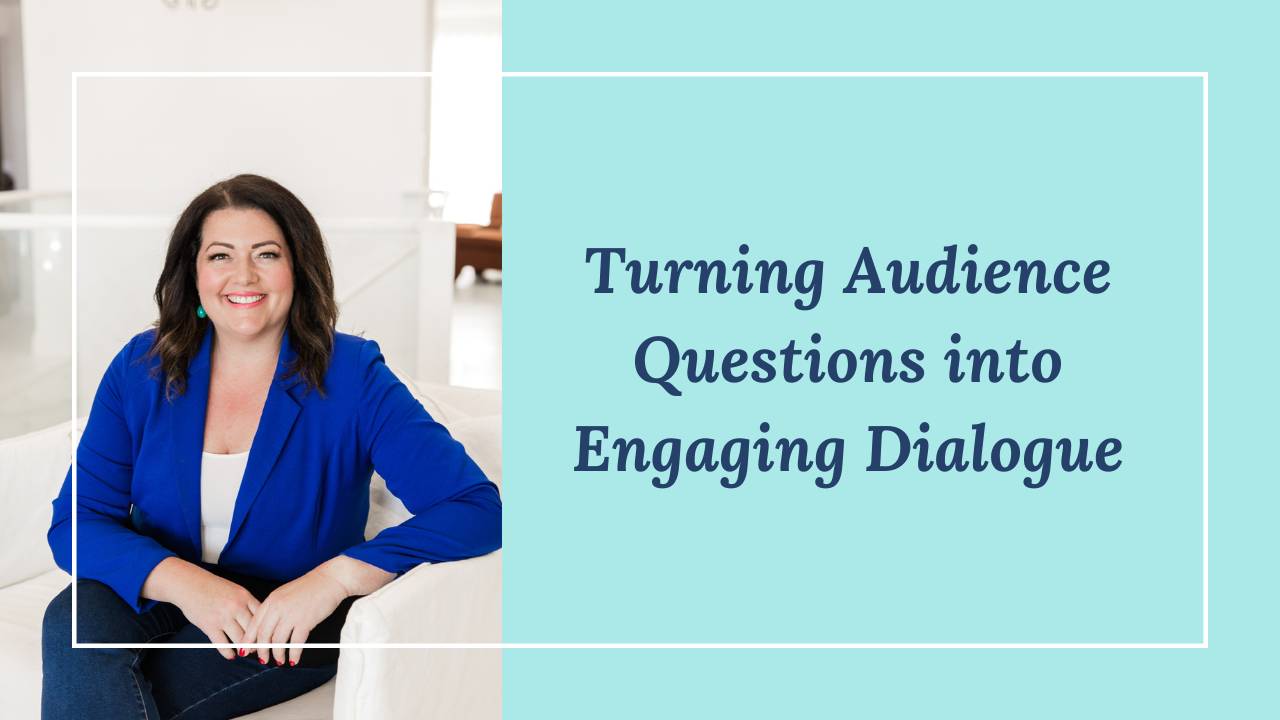Turning audience questions into engaging dialogue

As a paid speaker, one of the most crucial moments in your presentation isn't necessarily in the scripted slides or rehearsed anecdotes—it's in the unpredictable realm of audience questions. This segment, often reserved for the end of a presentation, can transform a one-sided monologue into a dynamic dialogue, fostering a deeper connection with your audience. But how can you ensure this segment doesn't derail your message or bore your listeners? Here's how to master the art of turning audience questions into engaging dialogue:
1. Welcome Every Question
Regardless of its nature, every question represents a member of your audience actively engaging with your content. Start by welcoming all questions and expressing gratitude. A simple "That's an excellent question" or "Thank you for bringing that up" can set a positive tone and encourage others to participate.
2. Paraphrase for Clarity
Ensure you and the audience understand the question by paraphrasing it back. This not only clarifies the query for everyone involved but also buys you a few extra seconds to formulate your response. "So you're asking about…" or "If I understand correctly, you'd like to know…" are good lead-ins.
3. Relate Back to Your Main Message
Every response should tie back to the core message or theme of your presentation. By anchoring your answers in this way, you maintain cohesion and reinforce your main points. For instance, if your talk is about leadership and someone asks about team dynamics, you might start your answer with, "In the context of effective leadership, team dynamics are essential because…"
4. Engage Other Audience Members
Turn a single question into a broader dialogue by engaging other audience members. Pose questions like, "Has anyone else faced a similar situation?" or "Would anyone else like to share their thoughts on this?" This transforms the Q&A session from a back-and-forth between one individual and you, into a group discussion.
5. Use Anecdotes and Examples
Stories stick. When answering a question, consider weaving in a relevant anecdote or example. Not only does this make your response more engaging, but it also aids comprehension and retention.
6. Admit When You Don't Know
Honesty builds trust. If you're faced with a question for which you don't have an answer, admit it. You can say, "That's a great question, and I don't have the specifics on that right now," and then either offer to find out or redirect by asking if anyone in the audience has insights on the topic.
7. Limit Your Response Time
While it's essential to address questions thoroughly, avoid spending too much time on one query. This ensures you can entertain questions from various audience members and keep the session lively and varied.
8. Encourage Follow-Up
At times, questions might be too intricate or specific for the given forum. In such cases, encourage the individual to connect with you post-session. This not only helps you manage time but also fosters deeper individual connections.
9. Use Body Language
Your verbal response is just one part of the dialogue; your body language speaks volumes too. Maintain eye contact with the person asking the question, use open postures, and nod to acknowledge points. These non-verbal cues enhance engagement and show attentiveness.
10. Prepare, but Stay Flexible
While spontaneity is the essence of Q&A sessions, it's wise to be prepared. Anticipate possible questions based on your topic and rehearse broad answers. However, remain flexible to the flow of the session and adapt as needed.
Engaging dialogue is the hallmark of a memorable presentation. By skillfully managing audience questions, you not only provide value but also build a rapport with your listeners. Remember, as a paid speaker, your goal isn't merely to relay information—it's to connect, engage, and inspire. And there's no better way to do that than by turning questions into rich, meaningful conversations. So the next time you see a raised hand or a curious face in the audience, view it not as an interruption, but as an opportunity to deepen your impact.


